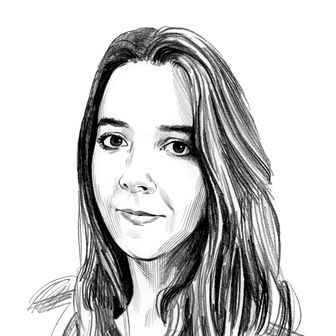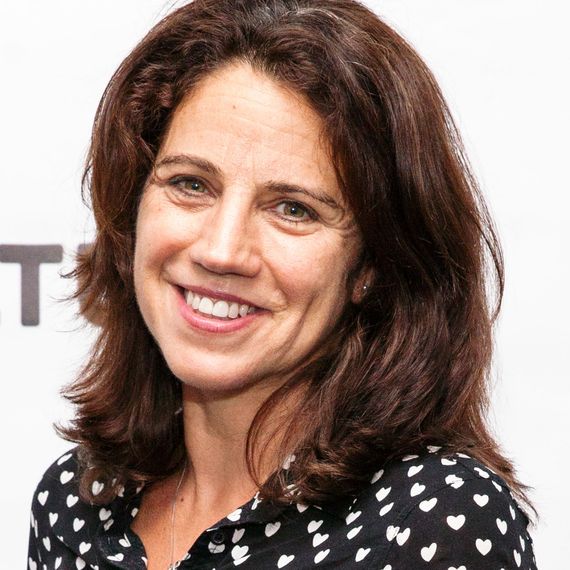
One of Saturday Night Live’s original Not Ready for Prime Time Players is getting some extra attention this week, and no, we’re not talking about Chevy Chase. The late, great Gilda Radner is the subject of a new documentary from director Lisa D’Apolito titled Love, Gilda, which opened this year’s Tribeca Film Festival and pieces together the beloved comedian’s life — from her childhood in Detroit to her time on SNL to her marriage to Gene Wilder to her battle with ovarian cancer — through never-before-seen-or-heard home movies, journals, audio, and interviews. Love, Gilda also features extra insight thanks to interviews with those who knew Radner, as well as those who count her as a comedy influence, including Martin Short, Laraine Newman, Lorne Michaels, Melissa McCarthy, Bill Hader, Maya Rudolph, and Amy Poehler.
Ahead of the film’s premiere today, we sat down with D’Apolito earlier this week following a Vulture Insiders screening of Love, Gilda to learn a little more about her approach to depicting Radner’s life, what she learned making the documentary, and what Gilda stories ultimately didn’t make the cut — including the time she fell in love with the chimpanzee from 1987’s Project X.
I’ve seen in other interviews that you volunteered for Gilda’s Club and that ultimately led to you making the documentary. What’s it like volunteering there?
Gilda’s Club is a place for people with cancer and it is on Houston Street. And it is a place that was founded after Gilda’s death by Gene Wilder and some of Gilda’s friends. So I would volunteer doing fundraising videos for Gilda’s Club, and Gilda’s presence — she is so present in the doors of Gilda’s Club. You walk through the door and there are murals of her. Most of the members have read her book, It’s Always Something. When I would interview people there was such a big, deep connection to Gilda, and I thought her legacy was so unique, because obviously she was one of the groundbreaking comedians, but she is also helping people in a really important way.
You had access to so many amazing resources for the documentary — her journals, all kinds of recordings, photographs going back to when Gilda was a baby. How’d you get your hands on all that, and how did you make sense of it and compile it into a story?
Well, the film was a journey. It was difficult to get interviews with anybody in the film, even Gilda’s friends, but each person led to another person. At one point it was just your typical documentary, which was just people talking about Gilda. Gilda’s brother had boxes of Gilda’s in storage and he didn’t really know what was in there, so Gilda’s best friend Judy — who is in the film — and I went to Detroit and in the boxes were so many amazing things. The first thing I found was the tape, a 20-minute film you see in the [documentary], of Gilda going through chemotherapy and she is in her hospital gown. That was the first thing I found, and once I found that and some audiotapes she had recorded for her book, It’s Always Something, then I could hear Gilda talking.
This took about five trips to Detroit to go over all the boxes, but there was so much in there. Once we started putting the film together, [a lot of] the audio was very destroyed, so we could use very little of it in the film. But once we started using Gilda’s voice, we started collecting radio interviews and reaching out to reporters that had interviewed Gilda, so it is kind of a mishmash of all kinds of archival material.
You mentioned some of the audio was destroyed. Was there anything in particular you came across where you were like, Oh, I’d love to use this, but the quality’s just too bad?
Yeah. It was 32 hours of Gilda telling her life story [from when] she met with people over a period of time, and some of them she recorded on her own — like when you see in the cancer section [in the documentary] when she talks about getting knocked down, she recorded that herself. There were movie reviews of movies at the time, and Gilda went to go see one — I think it was called Project X, which is in like 1987 about chimpanzees — and she talks about how she can relate to them because when she was going through all her treatment she felt like she was being experimented on. Then she talks about how she fell in love with the chimp and went to the trainer and agent to meet the chimp. She never met him, but then she wound up giving money to this chimp island.
These are crazy stories that don’t make sense in the film. Then there’s a story that I kept in the film until everyone told me I had to get rid of it because the audio was so bad. Gilda was in camp, and talks about how she wanted to be in plays, and pretty girls would be the princesses, and the controlling girls would be next to the princesses, and [she] — the fat girl — would be the servant. She talked about eating Tootsie Rolls in her room and crying at night and then finding out that she would never be pretty, even though I think she is beautiful, but she could be funny. It is poignant, but the audio was so bad and we had no footage to go along with it, so it never made sense in the film. But it is such a cute story.
Something I found very interesting was how the documentary shows her struggle with fame. Which is just fascinating to me in general.
I was fascinated by that as well. It goes back to the same thing: You think fame brings you all this stuff, but it also brings other things. Gilda was a people person and she liked to go out into the world and play and observe people and meet people, and it got to point in her life where she was going out, she was being mobbed — like her friend Pam was saying that Gilda was in the bathroom stall and people were putting autographs underneath [it]. So Gilda, who loved the world, her world started to close around her.
One of the journals is what we call “the fame journal,” which is what Melissa [McCarthy] and Amy [Poehler] and everyone else reads, and she makes fun of it too. So that is the whole Gilda thing: Even the darkest, heaviest stuff has a sense of humor. She finds a way to cope with things.
I loved watching all the comedians and SNL cast members interviewed for the documentary flipping through the pages of Gilda’s journals. How did you get them involved, and what was it like to show them Gilda’s old writings?
I always wanted them to read those journals, but I did not want to send them things to read in advance. I did not know how that part would ever work. Amy Poehler was our first interview, and my producer James said, “Why don’t you just read to Amy?” So I pulled out the book and Amy was like, “Is that Gilda’s?” and she just grabbed it was was rumbling through it, so I asked her to read some. But it happened organically, and it really happened organically with each of the performers. And I brought extra things for them to read after I knew that they were each having this reaction, but yeah, that was surprising to me.
What was the biggest thing you learned making the documentary?
Well, the biggest thing I learned is how much money and time it takes to make a documentary. [Laughs.] I really had no clue, so that was a big learning experience. I think personally, what I learned about Gilda was she was incredibly fearless as a performer, and she was confident — she could hold herself up with any of those guys — but in her personal life she felt so insecure. I have her diary from 1978, which was at the height of her fear. She was really lonely and her eating disorder was really kicking in. If you watched the [first] five years of SNL and watch season four, you can see how skinny she is, but she is still smiling and she is still happy. So I guess that’s what I learned — that you see people in television and they look like they are so enjoying themselves, but there is more to everybody.
Vulture Insiders is an exclusive opportunity for engaged readers to receive advanced insight, special event access, giveaways, and unique privilege to interact with Vulture staffers and fellow pop-culture obsessives. Interested in becoming an Insider? Apply here.



